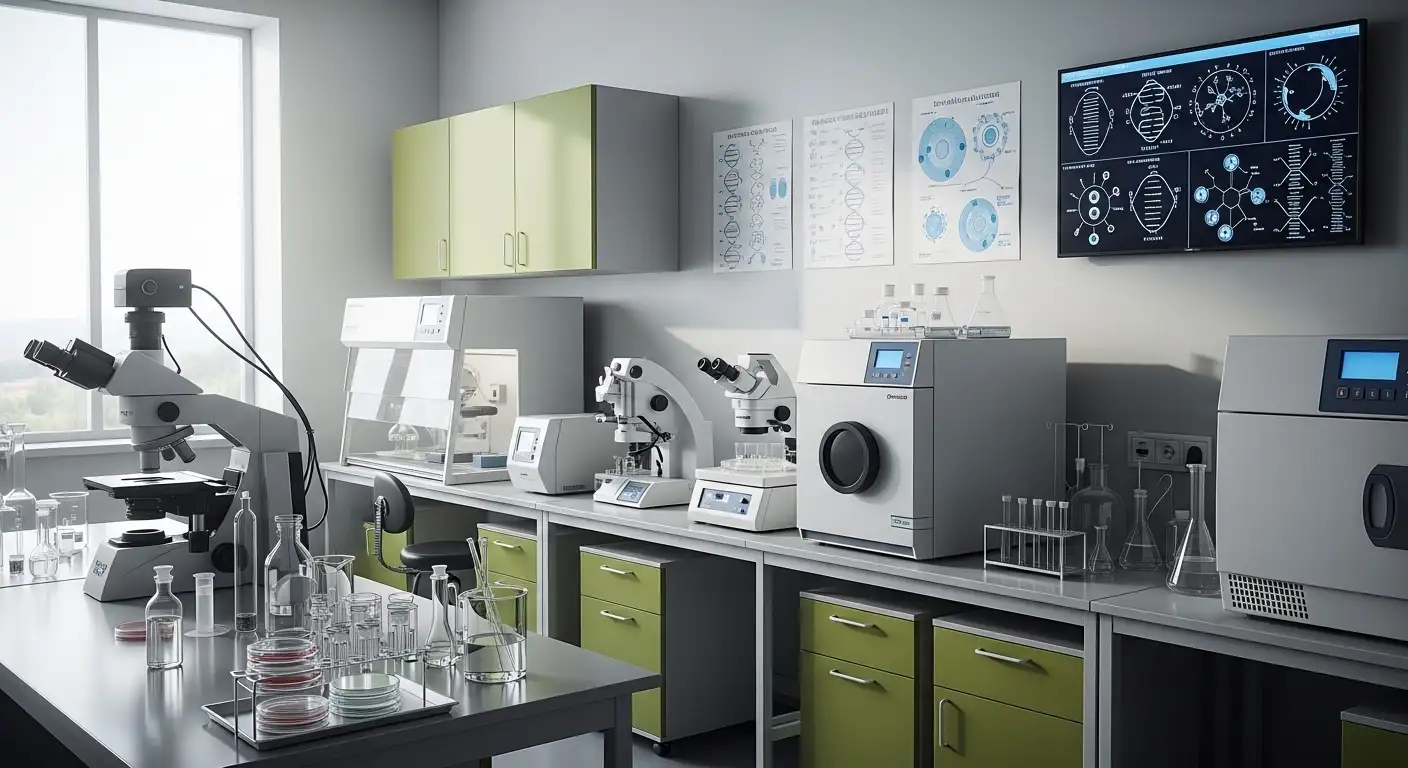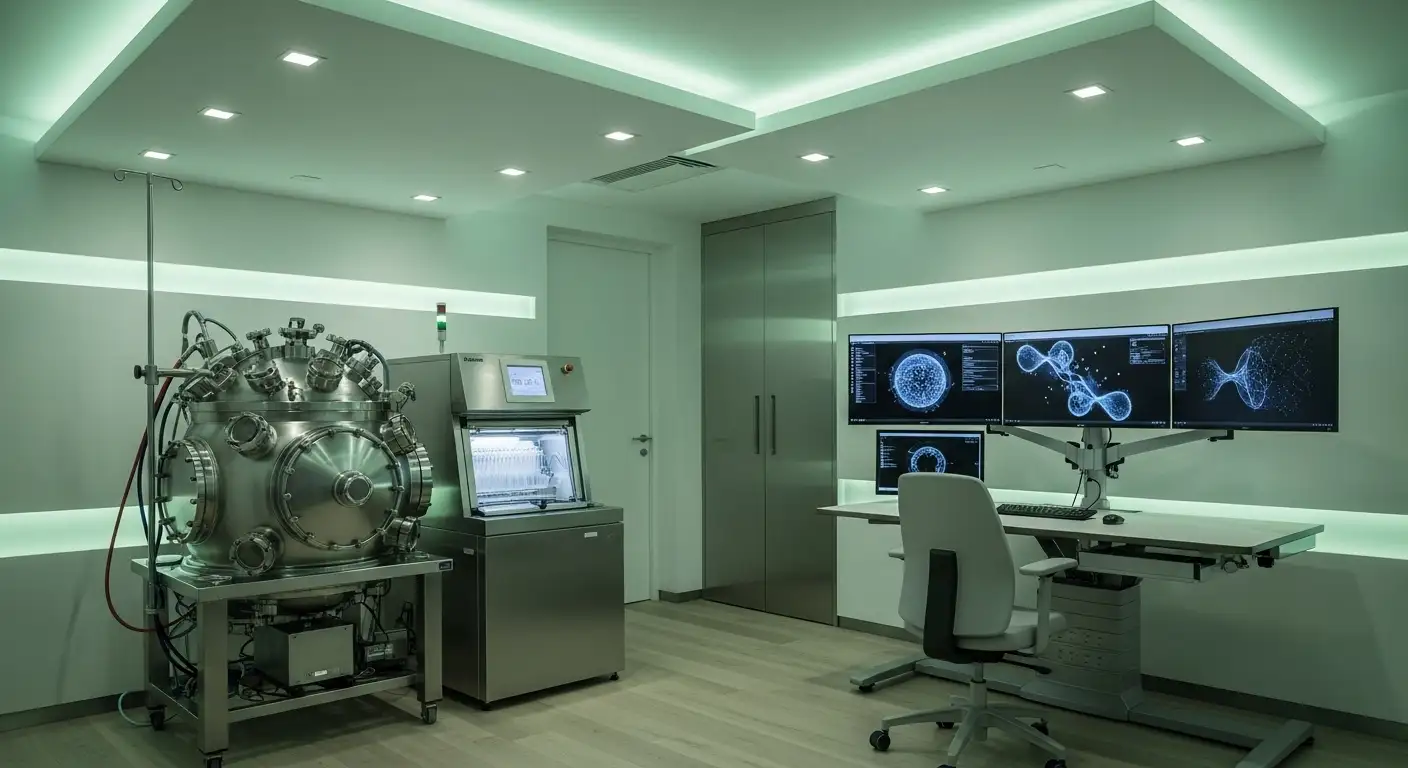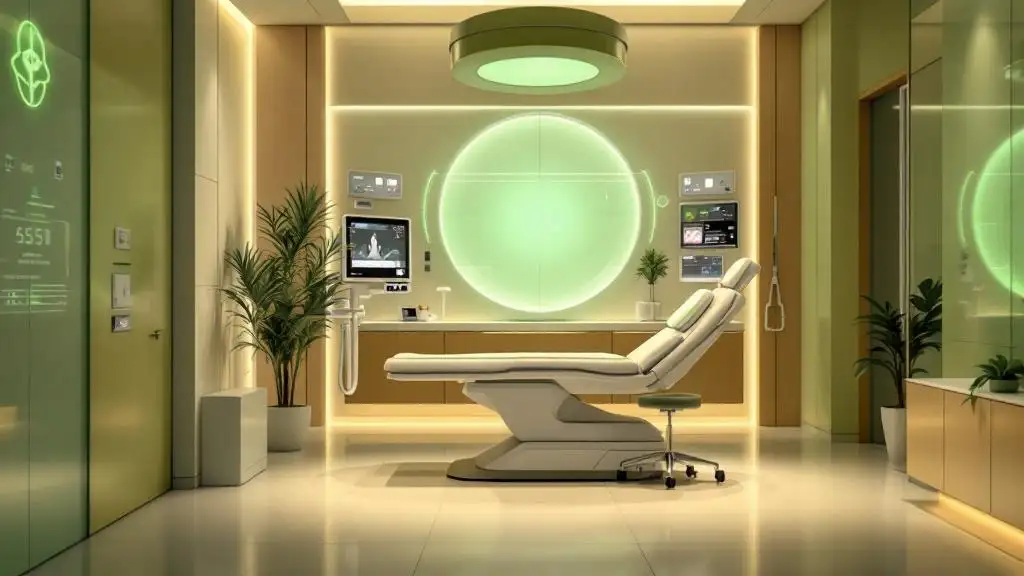What to expect after a frozen embryo transfer
Navigating the Journey After Your Frozen Embryo Transfer

Understanding the Frozen Embryo Transfer Experience
Frozen embryo transfer (FET) is a widely adopted assisted reproductive technology with promising success rates and a relatively gentle procedure. This article explores what patients can expect after a frozen embryo transfer, including medical care, symptoms, lifestyle considerations, emotional well-being, and diagnostic follow-up, to provide comprehensive guidance during this critical phase of fertility treatment.
The Frozen Embryo Transfer Procedure and Timeline

Overview of the FET Process
Frozen embryo transfer (FET) is a sophisticated assisted reproductive technique where previously frozen embryos are thawed and implanted into the uterus. It is a preferred alternative to fresh embryo transfers for many patients, offering comparable or better success rates due to improved hormonal conditions.
Preparation Phases Including Hormonal Treatments
Preparation starts by suppressing the natural ovarian cycle with birth control pills. This is followed by estrogen therapy to thicken and prepare the uterine lining for implantation. Once the lining is optimal, progesterone is introduced to support the uterine environment and help maintain early pregnancy.
Duration of the Overall FET Cycle
From initiation of the hormonal preparation to the embryo transfer, the entire FET cycle typically lasts between 6 to 8 weeks. This timeline includes necessary testing, hormone treatments, and monitoring to optimize conditions for implantation.
Procedure Details and Embryo Transfer Technique
The embryo transfer itself is a straightforward, usually painless procedure involving a thin, soft catheter inserted into the uterus under ultrasound guidance. The thawed embryo is gently placed inside the uterine cavity. The actual transfer typically takes 2 to 4 hours when including preparatory steps in the clinical setting.
Immediate Post-Transfer Recommendations
Following transfer, patients are advised to rest for about 24 hours, avoiding strenuous activity, sexual intercourse, hot baths, or heat exposure as these could interfere with implantation. Light activities such as walking and normal bathroom use are safe. Continuing prescribed hormones like progesterone is important along with maintaining a healthy lifestyle to support the chances of pregnancy.
Recognizing Post-Transfer Symptoms: What’s Normal?
Common Symptoms During the Two-Week Wait
After a frozen embryo transfer, patients often enter a waiting period of about two weeks before pregnancy can be accurately detected. During this time, several symptoms may arise. These include light spotting, pelvic cramping, fatigue, breast tenderness, nausea, increased urination, and changes in vaginal discharge. Some people may also notice missed periods as the wait progresses.
Signs Potentially Indicating Implantation
Light spotting or bleeding shortly after transfer can sometimes indicate that implantation of the embryo has occurred. Pelvic cramping and discomfort may also suggest successful implantation. However, these signs are not definitive, as they can be subtle and vary among individuals.
Effects of Fertility Medication on Symptoms
Many symptoms experienced during the two-week wait can also be side effects of hormone medications such as progesterone and estrogen, which are used to prepare and maintain the uterine lining. For example, breast tenderness, fatigue, and light spotting may result from these medications rather than implantation. Nausea, while less common during this phase, may occasionally appear as an early pregnancy symptom.
Variability in Symptom Presence and Absence
Importantly, not everyone experiences symptoms during the two-week wait. The absence of symptoms does not necessarily indicate a failed transfer and is considered normal for many individuals. Given the overlapping causes of symptoms—implantation or medication effects—patients are advised to wait for a pregnancy test approximately two weeks post-transfer to confirm pregnancy status and avoid unnecessary anxiety.
This range of symptoms underscores the complexity of interpreting physical signs during the post-transfer period, highlighting the importance of patience and medical follow-up.
Confirming Pregnancy: Testing and Follow-Up

Timing and Methods of Pregnancy Detection After FET
Pregnancy is typically detected about 10 to 14 days following a frozen embryo transfer (FET). The most accurate method involves a blood test measuring levels of human chorionic gonadotropin (hCG), a hormone produced during early pregnancy. Testing within this timeframe is essential for reliable results, as testing too early can lead to false negatives due to insufficient hormone production.
Interpretation of hCG Blood Tests
An elevated hCG level in the blood confirms a successful implantation and pregnancy. The hormone's presence signals that the embryo has begun to develop within the uterus. If the test is positive, it prompts further prenatal care discussions and monitoring.
Handling Positive and Negative Test Results
A positive hCG result marks the beginning of pregnancy management and supportive care. Conversely, a negative test does not always signify failure; it may indicate that implantation has not occurred or that hormone levels have not risen yet. In such cases, fertility clinics often provide emotional support and discuss possible next steps, which might include additional fertility treatments or cycles.
Importance of Waiting to Avoid False Negatives
Waiting the recommended 10 to 14 days before testing is crucial to avoid the emotional distress caused by false-negative results. Early testing may give a negative result despite implantation occurring shortly afterward, leading to premature disappointment and confusion.
Post-Transfer Lifestyle: Habits that Support Success
What lifestyle factors can impact fertility and reproductive health?
After a frozen embryo transfer (FET), adopting healthy lifestyle habits plays an important role in supporting implantation and overall reproductive well-being. Patients are advised to get adequate sleep, which helps regulate hormones and reduce stress, both critical for fertility.
Recommended physical activity levels after transfer
Light physical activities such as walking, using the bathroom, and climbing stairs are usually safe and encouraged. However, patients should avoid heavy exercise and vigorous activities immediately after the transfer to prevent uterine contractions that could interfere with embryo implantation. Sexual activity is also not recommended during this period.
Dietary considerations and supplements
Eating a healthy, balanced diet rich in fruits, vegetables, calcium, protein, B vitamins, and iron helps create an optimal environment for pregnancy. Continuing folic acid supplementation post-transfer is essential to reduce the risk of neural tube and congenital heart defects in the developing fetus.
Avoidance of harmful substances and endocrine disruptors
Patients should avoid substances like caffeine, alcohol, and tobacco as they can negatively affect fertility and pregnancy outcomes. Moreover, exposure to endocrine-disrupting chemicals (EDCs) such as bisphenol A (BPA), phthalates, parabens, and triclosan found in many household products should be minimized because these chemicals can interfere with hormone function and fetal development.
Role of sleep and stress management
Getting sufficient, quality sleep helps maintain hormonal balance and promotes emotional well-being. Managing stress through support from friends, family, or support groups is important during the two-week wait, as emotional health is closely linked to reproductive success.
Together, these lifestyle choices after embryo transfer can enhance the chances of a successful pregnancy and support overall reproductive health.
Emotional Well-being During the Two-Week Wait

Psychological Impact of Infertility Treatment
The two-week wait after a frozen embryo transfer (FET) is a period fraught with uncertainty and emotional vulnerability. Patients often experience a rollercoaster of feelings, including hope, anxiety, and fear of disappointment. This psychological strain is a common response to the high stakes involved in fertility treatments.
Importance of Emotional and Psychological Support
Emotional and psychological support services play a crucial role in complementing the medical aspects of fertility treatment. Counseling and therapy offer patients tools to manage stress, anxiety, and depressive symptoms that may arise. These services help reduce feelings of isolation and create a supportive environment where patients can express their concerns freely.
Coping Mechanisms and Support Groups
Support groups and peer networks provide opportunities for sharing experiences and coping strategies. Engaging with others who understand the emotional challenges of infertility can foster a sense of community and empowerment. Techniques such as mindfulness, relaxation exercises, and cognitive-behavioral therapy are effective methods that many patients find helpful during the wait.
Role of Mental Health Care in Fertility Outcomes
Managing mental health during the fertility journey can positively influence treatment adherence and improve outcomes. Psychological well-being enhances resilience, enabling patients to better handle treatment demands and uncertainties. Fertility clinics increasingly recognize the importance of integrated care, offering mental health resources alongside medical interventions.
Emotional and psychological support services, including counseling, therapy, cognitive behavioral techniques, and support groups, provide critical assistance in managing anxiety, stress, and depression that may accompany fertility treatments. These interventions foster emotional resilience, reduce isolation, and contribute positively to treatment adherence and outcomes by promoting mental well-being during this vulnerable period.
Understanding Fertility Treatments in Context: Beyond FET
What are the common medical treatments available to assist individuals and couples with conception?
Fertility treatments encompass a broad spectrum of medical interventions tailored to address various causes of infertility. These options include medication therapies, surgical procedures, and advanced assisted reproductive technologies (ART).
Medications such as clomiphene citrate and injectable gonadotropins stimulate ovulation in patients with hormonal imbalances or ovulatory disorders. Surgical treatments may be necessary to correct structural problems—for example, repairing blocked fallopian tubes or removing uterine fibroids—that can hinder conception.
Assisted reproductive technologies form a cornerstone of modern fertility care. Intrauterine insemination (IUI) is a less invasive option where sperm is placed directly into the uterus to facilitate fertilization. More complex is in vitro fertilization (IVF), where eggs are collected from the ovaries and fertilized outside the body in a laboratory setting. After fertilization, embryos are cultured for several days and then transferred back to the uterus.
Many IVF cycles include embryo cryopreservation, or freezing, allowing unused embryos to be stored safely for future transfer. This approach can increase pregnancy opportunities without undergoing repeated ovarian stimulation. Additionally, preimplantation genetic testing (PGT) is often performed on embryos to screen for chromosomal abnormalities or genetic mutations. This screening enhances the chances of a successful, healthy pregnancy and reduces the risk of miscarriage or genetic disorder transmission.
Treatment plans are personalized based on each couple’s diagnosis, age, and reproductive goals. Fertility specialists work closely with patients to identify the most appropriate interventions, optimizing outcomes through a combination of medical and surgical options alongside ART.
Advances and Emerging Technologies in Fertility Care

Innovations in Embryo Freezing and Transfer
Embryo cryopreservation techniques have significantly advanced since the late 1980s, now achieving over 95% survival rates of embryos after thawing. These improved methods ensure better preservation and higher success rates for Frozen Embryo Transfers (FET), which often yield pregnancy rates comparable or superior to fresh cycles. The FET process involves hormonal preparation to optimize the uterine environment, contributing to these enhanced outcomes.
Preimplantation Genetic Testing Benefits
Preimplantation genetic testing (PGT) has become an essential tool in fertility care, allowing clinicians to screen embryos for genetic mutations and chromosomal abnormalities before transfer. This advancement improves the chances of a successful pregnancy and supports the birth of healthier babies by minimizing risks associated with inherited conditions.
Developments in Assisted Hatching Techniques
Assisted hatching, a technique where a small opening is made in the embryo’s outer shell prior to transfer, is particularly beneficial in cases where previous IVF attempts have failed or when embryo implantation requires enhancement. This method helps embryos more effectively attach to the uterine lining, improving implantation success rates.
Future Technologies Like Gene Editing and Lab-Grown Gametes
Looking forward, gene editing technologies such as CRISPR hold the potential to correct inherited genetic disorders at the embryonic stage, though these remain in experimental stages and require careful ethical consideration. Similarly, biotechnology innovations involving lab-grown gametes could revolutionize fertility preservation and treatment, providing new options for patients facing infertility or undergoing medical treatments that affect reproductive capacity.
These emerging technologies collectively improve the safety, effectiveness, and personalization of fertility treatments, offering hope to many individuals and couples on their journey to parenthood.
Planning Next Steps After the Transfer Outcome

Interpreting results to guide further treatment
After a frozen embryo transfer (FET), a positive pregnancy blood test confirms a successful implantation. If the result is negative, fertility specialists assess multiple factors such as age, diagnosis, and prior treatment responses to tailor future plans. This evaluation helps determine whether to proceed with additional cycles, modify protocols, or explore alternative fertility options.
Timing recommendations for subsequent cycles
It is generally recommended to wait for a full menstrual cycle—approximately 4 to 6 weeks—before starting another FET or IVF cycle. This pause provides the body time to recover from hormonal medications and any procedural effects, improving safety and potential success in subsequent treatments.
Supporting patients through unsuccessful attempts
Unsuccessful embryo transfers can be emotionally challenging. Fertility clinics emphasize emotional support through counseling, support groups, or family and friends. Personalized guidance helps patients cope with disappointment while discussing realistic expectations and strategies for future attempts.
Importance of personalized guidance from fertility clinics
Fertility treatments are highly individualized. Clinics like PFCLA offer customized protocols and ongoing monitoring tailored to personal circumstances, including cause of infertility and treatment responses. This personalized approach optimizes outcomes by addressing both medical and emotional needs.
| Aspect | Description | Importance |
|---|---|---|
| Result Interpretation | Analyzing pregnancy test outcomes to determine next steps | Guides treatment decisions |
| Timing of Next Cycle | Waiting 4–6 weeks for menstruation before repeat treatment | Ensures body recovery |
| Emotional Support | Counseling and support systems for patients | Supports mental health during treatment |
| Personalized Protocols | Tailoring treatment plans based on individual patient factors | Optimizes success and patient wellbeing |
Navigating Your Path Forward Post-Transfer
Understanding what to expect after a frozen embryo transfer empowers patients to approach this phase with informed confidence. From recognizing common symptoms and following lifestyle guidelines to engaging emotional support and planning the next steps, a comprehensive approach maximizes the chances of a successful pregnancy. Collaboration with fertility specialists ensures individualized care tailored to one’s unique journey. Advances in technology continue to improve outcomes, offering hope and options at every stage of assisted reproduction.
References
- What to Expect After Your IVF Frozen Embryo Transfer
- Frozen Embryo Transfer (FET)
- Freezing Embryos
- IVF (In Vitro Fertilization): Procedure & How It Works
- What to Do After the Embryo Transfer: Precautions and More
- Embryos Don't Fall Out After IVF Transfer
- Female fertility: Why lifestyle choices count


































































































